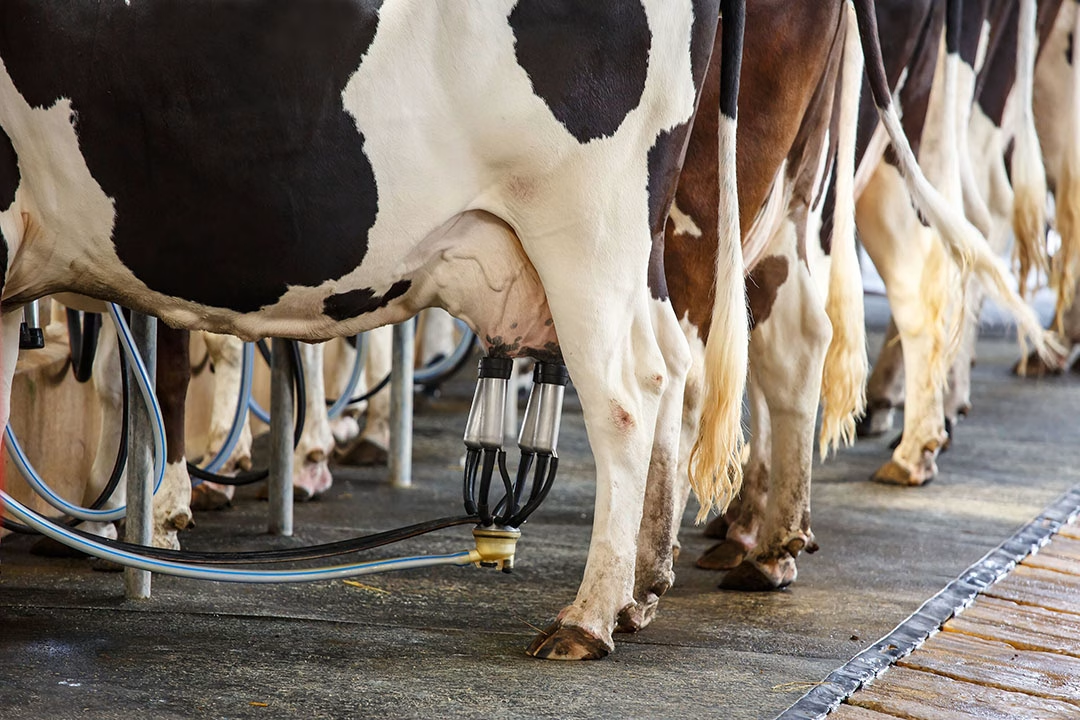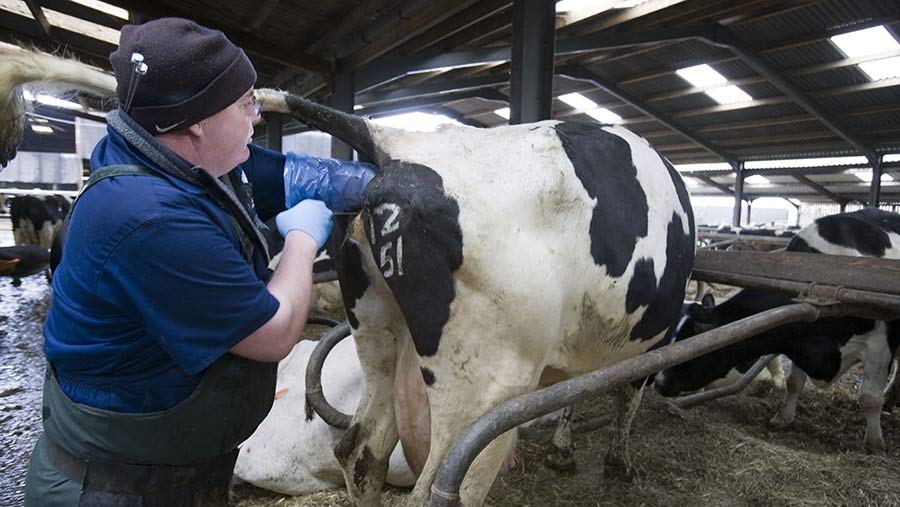Holstein fertility is surging globally! Discover how the US, Germany, and Canada use wildly different strategies—and why genomics is their secret weapon.
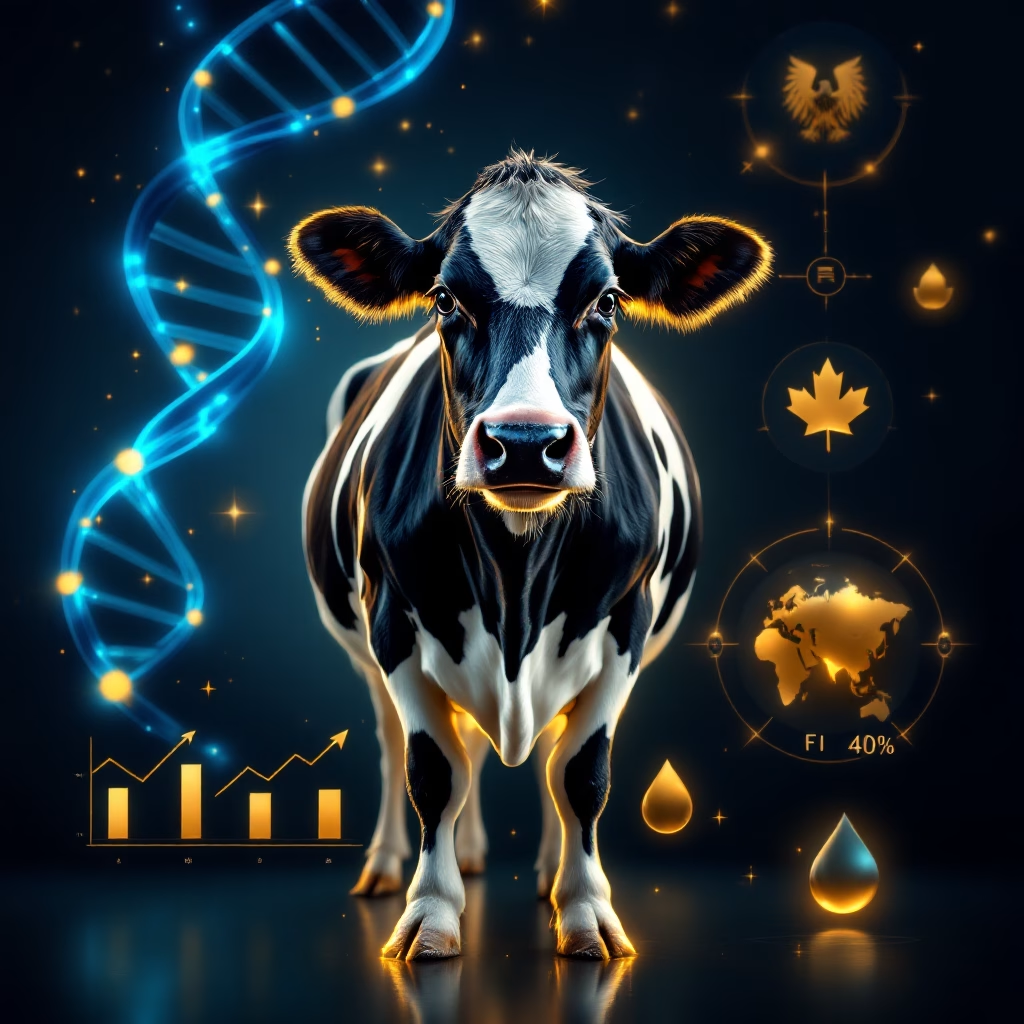
Twenty years ago, Holstein fertility was in freefall. Today, genomics and strategic index overhauls are rewriting the rules. Dive into the high-stakes global race to build a more fertile cow – and why your breeding decisions hang in the balance.
From the 60s through to the early 2000s, cow production increased enormously though the fertility of the Holstein cow declined alarmingly. Two decades ago, selection for fertility traits was established, and with the assistance of genomics, has started to reverse that downward trend in fertility. Here we examine how the US, Germany, and Canada evaluate fertility traits – with each taking a distinctly different approach to achieve the same goal.
US Shakes Up Fertility Index: Why CCR Now Holds Equal Power to DPR

In the United States, four fertility traits form the backbone of genetic evaluations provided by the CDCB. The most familiar to breeders is Daughter Pregnancy Rate (DPR), which predicts the likelihood of a non-pregnant cow becoming pregnant during each 21-day period. The others are Cow Conception Rate (CCR), measuring a lactating cow’s ability to conceive at each service, Heifer Conception Rate (HCR), assessing conception in maiden heifers, and Early First Calving (EFC), indicating the age at first calving.
When the US Holstein Association presents genetic evaluations, it combines these four traits into a Fertility Index (FI). As of August 2024, they use the formula: FI = (0.4 × DPR) + (0.4 × CCR) + (0.1 × HCR) + (0.1 × EFC). This represents a dramatic shift from the previous formula which placed dominant emphasis on DPR: FI (previous) = (0.7 × DPR) + (0.1 × CCR) + (0.1 × HCR) + (0.1 × EFC).
Why did the US demote DPR after 20 years as the fertility gold standard?
“The new 40-40 weighting of DPR and CCR isn’t just a math change – it’s a survival strategy. Farms can’t afford to wait for late-blooming cows in today’s high-cost environment.”
– CDCB Spokesperson, 2024 Base Update Report
The industry discovered a critical flaw: DPR doesn’t accurately account for voluntary waiting periods (VWP) – the time farmers intentionally wait after calving before breeding cows. This creates bias, as cows in herds with longer VWPs appear less fertile even if they conceive quickly once bred. By elevating CCR to equal status with DPR, the index now places greater emphasis on a cow’s fundamental ability to conceive when she is bred, regardless of when that breeding occurs after calving.
The Bottom Line: Forget DPR dominance – the new Fertility Index forces breeders to prioritize cows that get pregnant NOW, not just eventually.
Germany’s Fertility Focus: 90% of Their Index Hinges on One Critical Trait
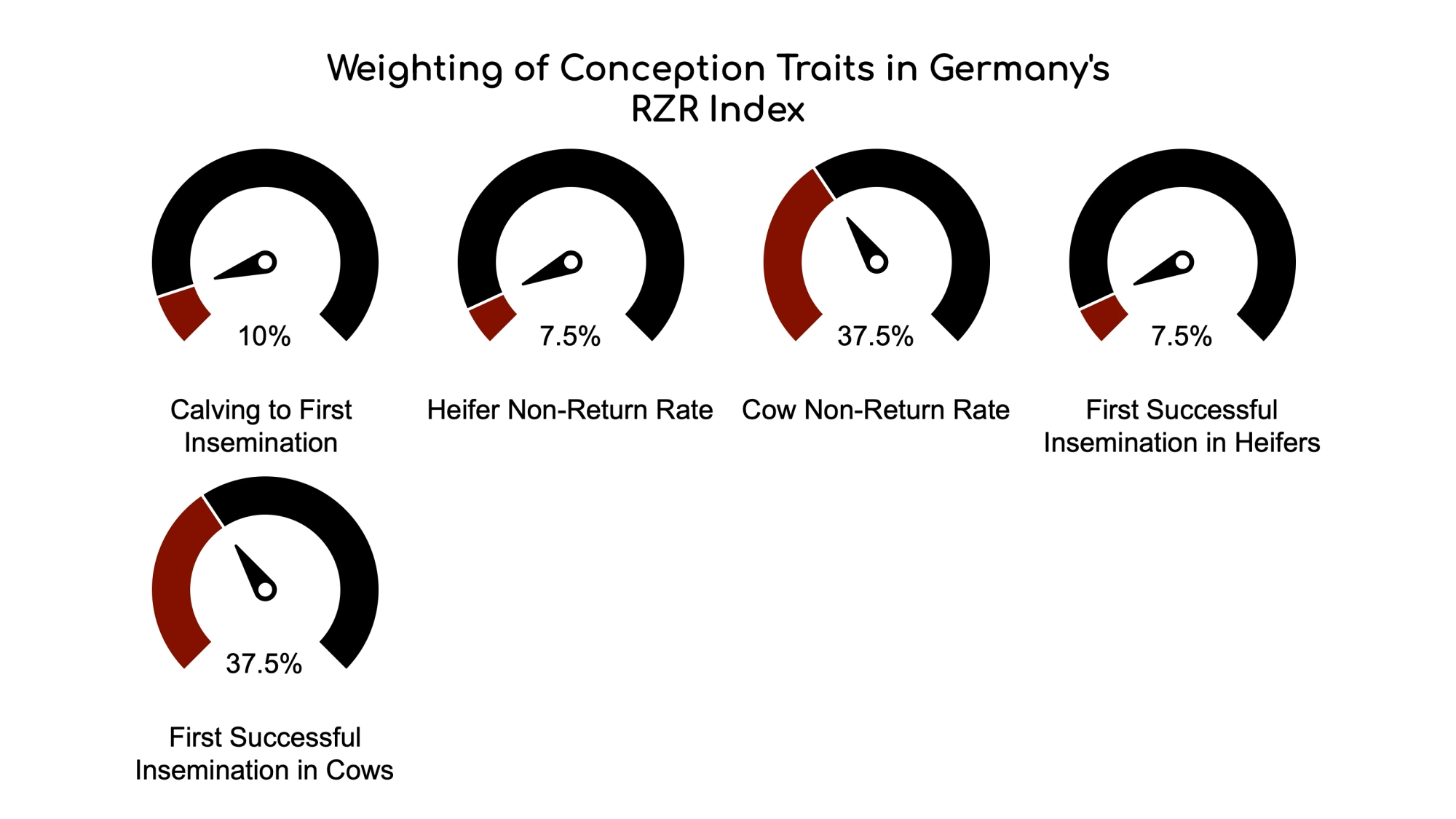
Germany takes a dramatically different approach with its RZR (Reproduction) index. Unlike the US with its four published traits, Germany’s RZR consists of five different traits but places a staggering 90% of the index weight on conception traits.
The German system evaluates:
- Calving to first insemination (10% of RZR)
- Non-Return Rate in heifers
- Non-Return Rate in cows
- First to successful insemination in heifers
- First to successful insemination in cows
The four conception rate traits collectively account for 90% of the RZR, with specific weightings of 7.5% for heifer non-return rate, 37.5% for cow non-return rate, 7.5% for first-to-successful insemination in heifers, and 37.5% for first-to-successful insemination in cows.
What’s particularly telling about Germany’s approach is the decreasing importance of RZR within their overall Total Merit Index (RZG). This shift reflects Germany’s growing emphasis on health traits through their RZhealth index, which now incorporates various reproductive health disorders.
“We don’t just breed for conception – we breed cows that recover. A healthy uterus today means three more lactations tomorrow.”
German Holstein Association, 2025 RZG Guidelines
Health is the new fertility: German breeders now treat uterine health as critical as conception rates, recognizing that a healthy cow is inherently more likely to exhibit good fertility.
Canada’s Secret Weapon: The Multi-Trait Approach That Goes Beyond Conception

Canada employs the most comprehensive approach of the three nations, using a sophisticated multi-trait reproductive performance model that includes both calving-ease and fertility. When you look at Daughter Fertility on a Canadian genetic evaluation, it’s an index comprised of 6 different fertility traits.
The Canadian Daughter Fertility index incorporates:
- 11% Age at first service
- 16% Non-Return rate in heifers
- 8% First service to conception in heifers
- 15% Calving to first service
- 34% Non-Return rate in cows
- 16% First service to conception in cows
What makes Canada’s approach unique is that these 6 fertility traits are just some of the 16 traits evaluated using their multi-trait reproductive performance model. This comprehensive approach acknowledges that calving-ease impacts fertility, and data from associated traits can improve accuracy and reliability.
Canada’s secret weapon? Gestation Length. While not directly used in the Daughter Fertility index, gestation length affects calving-ease, which impacts fertility. Longer gestation periods are associated with larger calves creating more calving problems, which can lead to retained placenta and longer recovery times.
“Gestation length is the silent fertility trait. Optimize it, and you solve calving ease, stillbirths, and cow recovery in one move.”
Canadian Dairy Network Geneticist, 2024 Reproductive Model Analysis
By incorporating this data, Canada improves the accuracy of their fertility traits without explicitly selecting for gestation length.
While the US and Germany spar over conception metrics, Canada’s playing a different game entirely – and their secret weapon isn’t even a fertility trait.
The Global Fertility Revolution: Different Paths, Similar Success
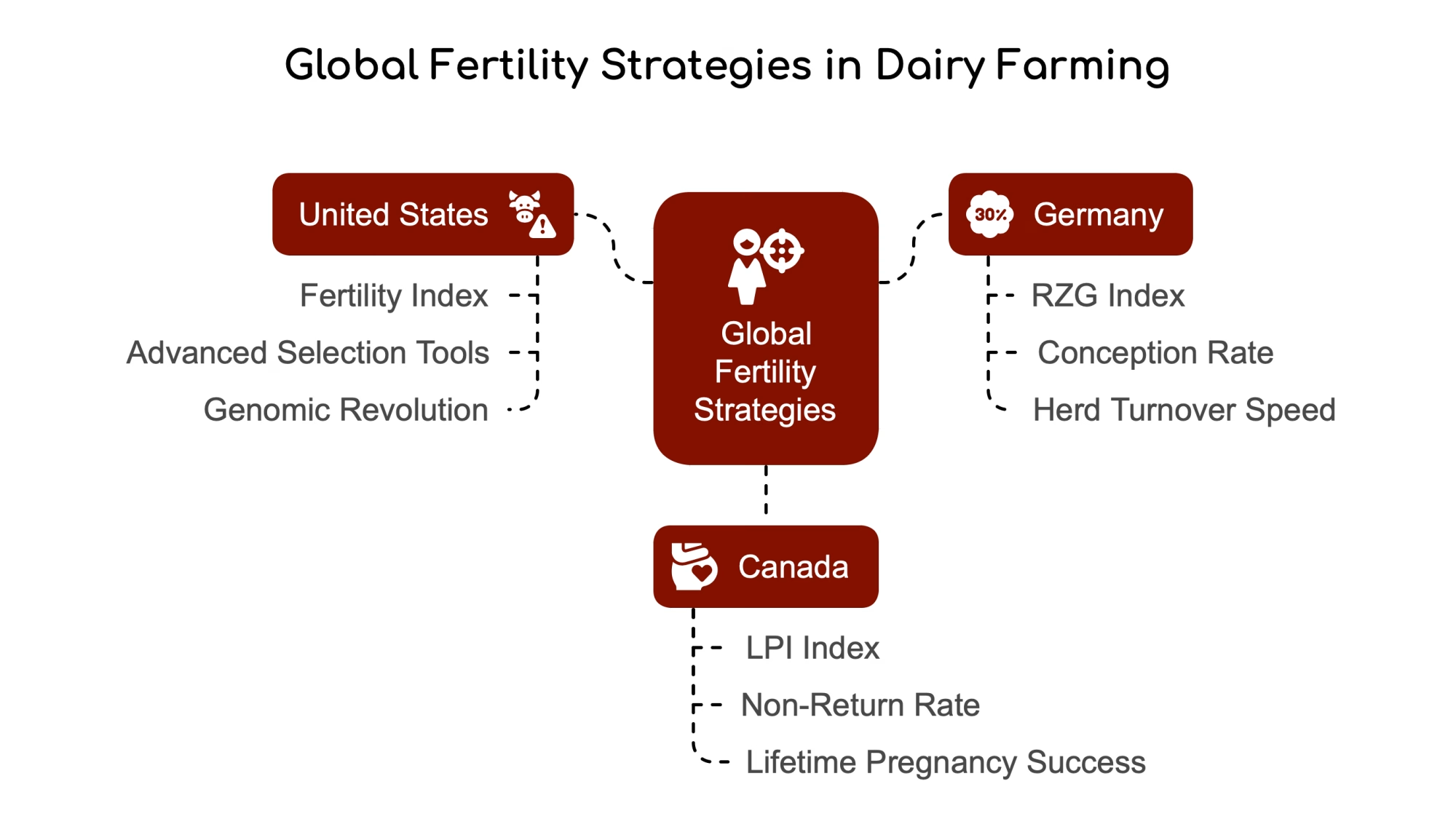
What’s more valuable: A cow that conceives fast or one that stays pregnant? Three countries have very different answers – yet all are seeing positive results.
Despite their different approaches, all three nations are experiencing genetic improvements in fertility traits. The US has seen a reversal of previous declines in fertility, with improved pregnancy rates and fewer inseminations required per conception. Germany has observed improvements in daughter fertility metrics among top Holstein bulls. Canada’s analysis shows they’ve avoided the steep fertility decline seen in other dairy nations.
Global Fertility Index Comparison
| Country | Key Metric | Top Weighted Trait | Economic Focus |
| US | Fertility Index (FI) | CCR (40%) | Lactating cow ROI |
| Germany | RZR | Conception Rate (90%) | Herd turnover speed |
| Canada | Daughter Fertility Index | Cow NRR (34%) | Lifetime pregnancy success |
Source: Compiled from Holstein Association USA and CDCB reports
This shared success stems from:
- Strategic Integration: All three countries have incorporated fertility into comprehensive breeding programs alongside production traits.
- Advanced Selection Tools: Multi-trait indices like Net Merit (US), RZG (Germany), and LPI (Canada) allow breeders to select for balanced genetic improvement.
- Genomic Revolution: Genomic evaluations provide more accurate assessments of fertility potential at younger ages, accelerating genetic progress.
“Genomics cut 5 years off fertility gains. What took decades with DPR, we’ve achieved in half a generation with CCR-focused genomics.”
USDA Animal Genomics Researcher, 2025 Conference Keynote
Trait Heritability & Reliability
| Trait | Heritability | Genomic Reliability | Management Influence |
| DPR (US) | 4% | 58% | High (VWP policies) |
| Cow NRR (Canada) | 8% | 67% | Moderate |
| KON (Germany) | 6% | 63% | Low |
| Gestation Length | 22% | 71% | Minimal |
Source: CDCB 2025 base change data
While Germany obsesses over conception rates (90% weighting!), Canada’s focus on pregnancy durability (34% cow NRR) proves there’s more than one path to profit.
For Canadian herds, the difference between using bulls in the top 10% for Daughter Fertility versus average bulls translates to a 5% improvement in heifer non-return rates and a remarkable 12% improvement in cow non-return rates. This means significantly fewer repeat breedings and more pregnancies established on first service.
“Switching to CCR-focused bulls slashed our conception costs by 18%. The days of ‘milk first, fertility later’ are over.”
Wisconsin Dairy Producer, 2024 Holstein USA Survey
The Future of Fertility Selection: 3 Essential Strategies for Dairy Breeders
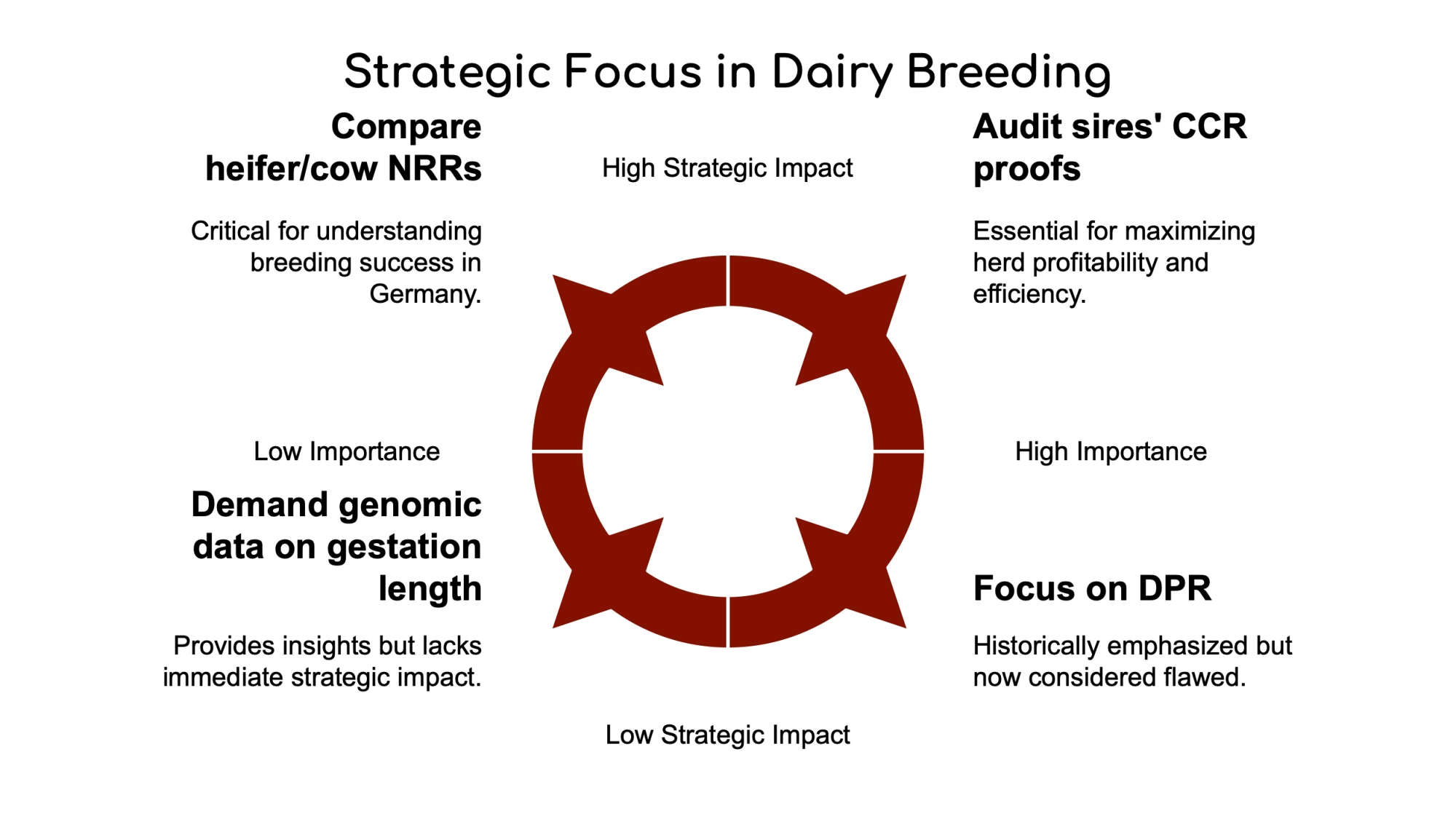
The fertility index war isn’t academic – it’s a survival toolkit. Breed for yesterday’s traits, and you’ll bankrupt tomorrow’s herd.
As these evaluation systems continue to evolve, breeders should:
- Audit sires’ CCR proofs: With CCR now equal to DPR in the US index, this trait demands your attention.
- Compare heifer/cow NRRs: Germany’s heavy emphasis on non-return rates highlights their importance.
- Demand genomic data on gestation length: Canada’s approach shows the value of this associated trait.
Are you still chasing DPR? You’re betting on a trait the USDA itself admits is flawed. The most successful breeders will understand how each country’s approach can inform their breeding decisions, creating more balanced, efficient, and profitable Holstein cows.
The fertility revolution proves what forward-thinking breeders have known all along: a cow that can’t reproduce efficiently will never be truly profitable, no matter how much milk she gives.
Key Takeaways:
- US Strategy: The 2024 Fertility Index now weights CCR and DPR equally (40% each), prioritizing cows that conceive now over long-term predictions.
- Germany’s Shift: Reduced emphasis on fertility (RZR index) reflects a pivot toward holistic cow health as the foundation of reproductive success.
- Canada’s Edge: Gestation length—not officially a fertility trait—enhances accuracy in their model, cutting calving complications and boosting pregnancy durability.
- Global Trend: All three countries report rising fertility rates, proving genomics and tailored indices can overcome low-heritability challenges.
- Profit Impact: Top Canadian sires improve cow non-return rates by 12%, while US herds using CCR-focused bulls save $18,000/year on breeding costs.
Executive Summary:
Despite differing methodologies, the US, Germany, and Canada are all achieving genetic gains in Holstein fertility through strategic trait prioritization. The US shifted focus to Cow Conception Rate (CCR) in its Fertility Index to counter Daughter Pregnancy Rate (DPR) flaws, Germany prioritizes conception rates but now balances fertility with health traits, and Canada leverages non-return rates and gestation length in a multi-trait model. Genomics accelerates progress across all three nations, proving diverse approaches can coexist successfully. These innovations help reverse decades of fertility decline while maintaining milk production gains.
Learn more:
- The Great Holstein Shakeup: How 16 Years Rewrote Breeding Rules
Explore how genomic selection has revolutionized low-heritability traits like fertility, accelerating improvements in Holstein breeding and profitability. - Unlocking Holstein Fertility: How Genomic Daughter Pregnancy Rate Affects Postpartum Estrous
Dive into the impact of genomic evaluations on postpartum estrous behavior and learn how reproductive management strategies can boost herd fertility. - How Genomics and Sexed Semen Are Remaking the Dairy Cow
Discover how genomics and sexed semen are transforming dairy breeding by enhancing genetic traits for fertility, milk components, and herd efficiency.
 Join the Revolution!
Join the Revolution!
Join over 30,000 successful dairy professionals who rely on Bullvine Daily for their competitive edge. Delivered directly to your inbox each week, our exclusive industry insights help you make smarter decisions while saving precious hours every week. Never miss critical updates on milk production trends, breakthrough technologies, and profit-boosting strategies that top producers are already implementing. Subscribe now to transform your dairy operation’s efficiency and profitability—your future success is just one click away.







 Join the Revolution!
Join the Revolution!